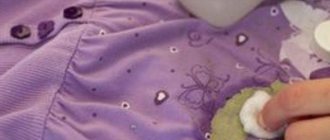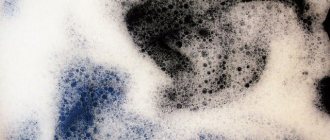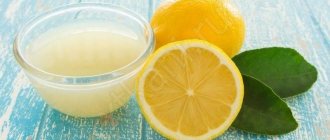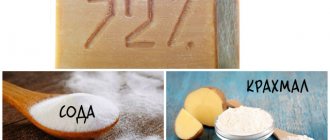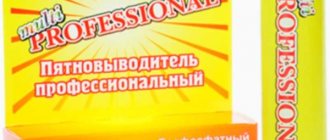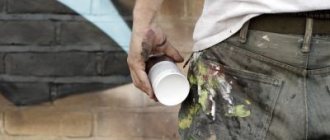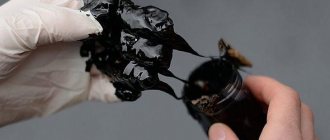Share on social media networks:
How to remove linden from clothes? - If you have children, then sooner or later this problem will affect you too. You bought your child new trousers, a jacket, shoes, so to speak, dressed them up like a brand new, and after returning from kindergarten, all the new things are stained with an incomprehensible yellow substance? In March or April, when the leaves on the trees have not yet blossomed, buds swell on linden and poplar. So they actually emit a yellow substance, which not only spoils clothes, but also settles in an unpleasant sticky coating on cars, benches and other objects. The question immediately arises in your head: how to remove linden stains from clothes so that they again acquire a clean and neat appearance.
Why are linden and poplar stains so persistent?
Previously, residents planted many lindens and poplars in each yard in order to landscape the yard area. But no one thought that these trees would cause so many problems. At the beginning of spring, benches, borders, windows in apartments and other surfaces are covered with yellow marks, and if children are walking in the yard, then so are their clothes.
When poplar and linden pollen gets on items of clothing, it leaves yellow, difficult-to-remove marks. Accordingly, for any housewife they turn into a real problem, and not everyone knows how to wash poplar buds from clothes.
For car owners, this problem is easier to solve. It is enough to purchase a special product at a car dealership and clean the car with it. But washing clothes is a much more difficult task.
There are situations when contamination from linden was not immediately noticed. It has already managed to properly saturate the fibers of the fabric and be absorbed into the material. It is very difficult, and sometimes even impossible, to remove these traces. Regular washing or soaking with powder will not remove such stains from the surface.
Important! Linden resin is a chemical compound of polymers that is difficult to remove with ordinary water, and even an alkali solution is powerless here. The resin is absorbed into the fabric so quickly that rarely does anyone succeed in getting rid of it without damaging the material.
How to wash poplar buds? - Theoretical knowledge
In order to understand how to wash poplar buds from clothes, you need to remember a little school chemistry course. It is necessary to choose a product that dissolves the tarry base of the stain. Among all the solvents of the resinous base, several preparations can be distinguished:
Nitric acid
Nitric acid is the most effective way to remove linden from clothes. But due to its properties harmful to the human body, it should not be used for these purposes.
Hydrobromic acid
This tool can also quickly and easily solve the problem. But for the same reason as nitric acid, it is not used in this case.
Acetone
This product will help remove unattractive stains from clothes without harming human health. Of course, the last condition is only possible if the safety rules when working with acetone are observed.
Bleach
Chlorine-containing bleach is available to almost every housewife. Its big disadvantage is the very strong smell. Therefore, such a product should be used with extreme caution to remove linden from clothes.
Conclusion
Of all the options proposed above, only two will not cause much harm to human health: acetone and bleach. Apply one of the stain removers to your clothing. Perhaps it will be effective.
Important! Clothing made from natural fabrics in calm shades has a better chance of getting rid of yellow poplar marks.
Traditional methods of elimination
The less time the stain has been on the clothing, the easier it is to wash it off.
If poplar stains are found on trousers or outerwear, and there are no special preparations at hand to remove them at home, you should not despair; you can try to clean off the Velcro using improvised means. Another important point is that the fresher the contamination, the easier it is to deal with it. After all, when the resinous substance hardens, even dry cleaning specialists are not always able to remove it from the fabric.
Application of acetone
Pure solvent concentrate is very strong, so it is only suitable for old clothes or items made from dense fabrics such as raincoat fabric, jeans, corduroy or tweed. Although, before using it on such materials, it is better to try the substance in a corner on the wrong side of the item being treated and observe the reaction. Mode of application:
- Soak a cotton pad in the solution;
- Gently dab traces of poplar from clothing with it until they disappear completely.
- Wash in a convenient way.
If you need to remove a stain from poplar linden from items made from more delicate fabrics, you can use the following recipe:
The yellow part of the egg is the basis for homemade stain remover.
- Separate the egg yolk from the white.
- Add 1 tbsp to it. l. salt and acetone.
- Beat until foamy.
- Apply the mixture to the stain and leave for a better reaction for 4-5 hours.
- After the time has passed, wash the item with soap.
Cleaning with alcohol
One of the easiest and most effective ways to clean substances from clothes. The main point in such removal is the statute of limitations of the stain. The contamination must be fresh; alcohol will not overcome old, frozen traces of poplar. A very simple cleaner to use. You should soak cotton wool in the solution and use it to wipe off the yellow substance of the linden tree. At the end of the procedure, wash the product in a convenient way.
Other solvents
You can also remove stains from the resinous substance of poplar with such strong preparations as gasoline, diesel fuel, turpentine or kerosene. One bad thing is that such stain removers are not suitable for removing stains from delicate and natural fabrics. Their aggressive influence can simply dissolve the material. But it can easily deal with marks on a jacket or jeans without damaging the clothes. Cleaning is simple; you need to soak cotton wool or a soft cloth in the chosen solvent and use it to clean the stains left behind by the poplar buds.
Removal by heat treatment
Long-dried drops can only be removed using household appliances.
There is, perhaps, only one way to cope with old, frozen traces of poplar linden. This is a method of exposing the viscous structure of the resin to high temperatures. The essence of heat treatment is to heat and absorb the resin into the paper. Cleansing method:
- Spread the soiled product on the floor.
- Place a thick paper napkin on both sides of the stain.
- Heat the iron to maximum temperature and iron it over the napkin.
- Change the paper as soon as it becomes contaminated with a resinous substance.
- When you can completely remove the stain using an iron, wash the item in a washing machine or by hand.
Soap solution
If poplar buds just get on your clothes, you can remove stains from them using laundry soap. And you need to do it like this:
- On a coarse grater, grate half a bar of soap.
- Place the soap in a wide bowl and pour 3 liters of boiling water over it.
- When the temperature of the liquid drops a little, since you cannot wash clothes with hot water, otherwise they will shrink and become deformed, soak the soiled item in it.
- Leave for 2-3 hours.
- Rinse and hang to dry.
Other methods of elimination
It is difficult to remove poplar buds from clothes, but if you have a couple of proven products, it is possible. Many people use regular nail polish remover for cleaning. Treatment with such a solvent is simple; cotton wool is soaked in it and the stain is removed from the fabric. Experienced housewives say that while the resin has not hardened, the product should be immediately sent to the freezer. Under the influence of low temperatures, the substance cracks and crumbles on its own. Although, of course, there are cases that none of the listed remedies helped get rid of stains. This outcome requires seeking help from a dry cleaner; perhaps the specialists working there will be able to save the soiled item from disposal.
How to remove a stain from a poplar bud? — Practical knowledge
So, let's take a closer look at the tools that will help solve this problem.
Acetone
On most forums that discuss the topic of how to remove Velcro from poplar from clothes, most often there is one excellent effective method, and also a very simple one.
Every girl has nail polish remover in her toilet cabinet. So she will come to help us. The only condition: the nail polish remover must contain acetone. Otherwise, she will not cope with the task.
What nail polish remover is without acetone, you ask? However, today many manufacturers of such products add oils and various additives to the liquid to protect nails from exposure to harmful solvents. And in some products it is absent altogether. In this case, you will have to visit a hardware store. You can buy pure acetone in the paint department. It removes paint stains perfectly, and will remove poplar marks with the same zeal.
Important! You should use this product extremely carefully so as not to spoil things.
Mode of application:
- Apply a small amount of acetone to a cotton swab.
- Apply the swab to contaminated areas of clothing.
- After cleaning, things should be well ventilated to get rid of the specific smell of the solvent.
Bleach
Don't know how to remove poplar Velcro from white clothes? To clean light-colored clothing, use bleach. If you don’t have it at home, try using Domestos. It has similar properties.
Important! Before using the product, test its effect on an inconspicuous area of clothing. If there is no reaction, you can begin removing stains.
Mode of application:
- Turn the product inside out.
- Apply bleach to a clean cloth and apply it to the contaminated areas.
- After treatment, wash clothes with laundry soap.
Important! When working with bleach, wear protective gloves to avoid damaging your hands.
Thorough cleaning of fabric shoes at home
If there are obvious signs of contamination, careless care or dry cleaning is no longer effective, it is necessary to take radical measures to resuscitate your favorite wardrobe item at home.
There are several ways to properly clean textile shoes. Gentle care for original shoes involves cleaning or washing them only by hand.
All kinds of rhinestones, plaques, sequins, decorative stones will not withstand automatic washing, and shoes with heels are not intended for a washing machine.
- Manual cleaning.
First, we free the sneakers or sneakers from the accessories: we take out the insoles and laces. You can wash white insoles and laces by hand, but it is better to put them in the washing machine with your laundry; they will wash perfectly without your intervention. Next, wet the top with water and detergent so that the detergent penetrates the fibers of the fabric. A reasonable question arises: what detergent should I use to achieve excellent results at home? White sneakers, sneakers, and moccasins can be safely cleaned with modern washing powders. - Laundry soap.
As practice shows, it is more advisable to clean colored sneakers, sneakers or moccasins with commonplace laundry soap. Why? For some time now, newfangled gels and washing powders have undeservedly displaced ordinary laundry soap from store shelves. Often, having generously poured advertised powders into the drums, housewives notice with horror after washing that the bright colors of their favorite things have faded significantly. This happens because the principle of action of almost all known powders is based on whitening properties. The blue granules in the powder structure are the active bleaching additives that are ideal for white fabrics. Whereas laundry soap has the function of deep penetration into the fabric and corroding stubborn stains. Soap has almost no effect on the color of things; if you wash jeans with laundry soap, they will never fade. In addition, soap is the cheapest shoe care product.
You can clean printed material at home with Antipyatin soap or stain remover for colored laundry. White clogs or flip-flops can be cleaned with stain removers designed for light-colored fabrics.
How to wash poplar buds and linden pollen? Folk remedies
There is one method that effectively removes linden and poplar pollen from dark-colored clothing.
Turpentine
The use of turpentine is a folk method for removing linden from jeans or cleaning dark clothes. Our grandmothers used it very often. It works great, takes minimal time and costs little money. If you don't have turpentine at home, buy it at a hardware store. Since this is a very versatile tool, it will definitely come in handy in everyday life.
Mode of application:
- In a small container, mix half a teaspoon of turpentine and half an egg yolk. Mix the ingredients thoroughly until a homogeneous mixture is obtained.
- Apply the resulting mixture to the contaminated area and leave for several hours for better effect of the product.
- Finally, wash your clothes with laundry soap or stain remover.
Today there are many products that can help remove poplar from clothes, but they all have different effects on the fabric and human health. In our article, we described the simplest, but time-tested methods of how to wash linden and return your things to their former neat appearance.

